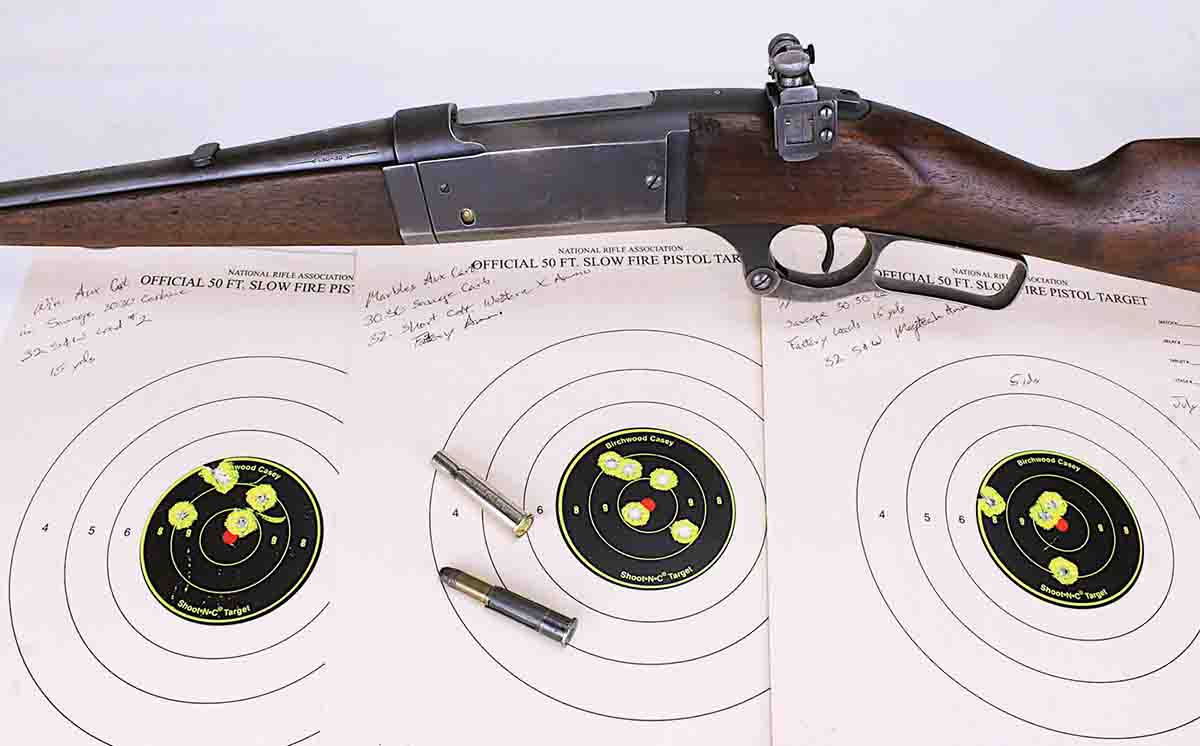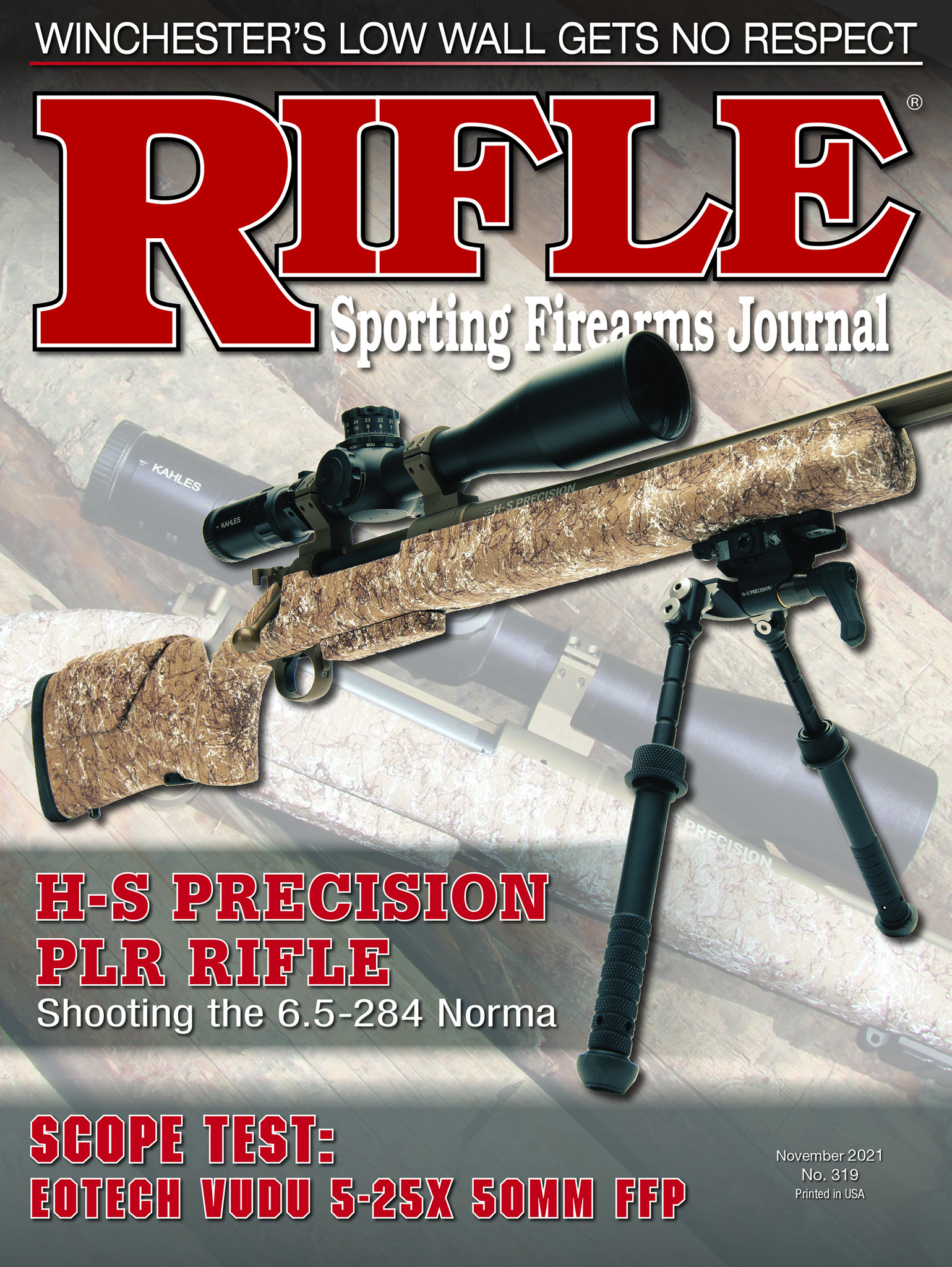Auxiliary Chambers
Turning Rifles into "Handguns" and Back Again
feature By: Art Merrill | November, 21
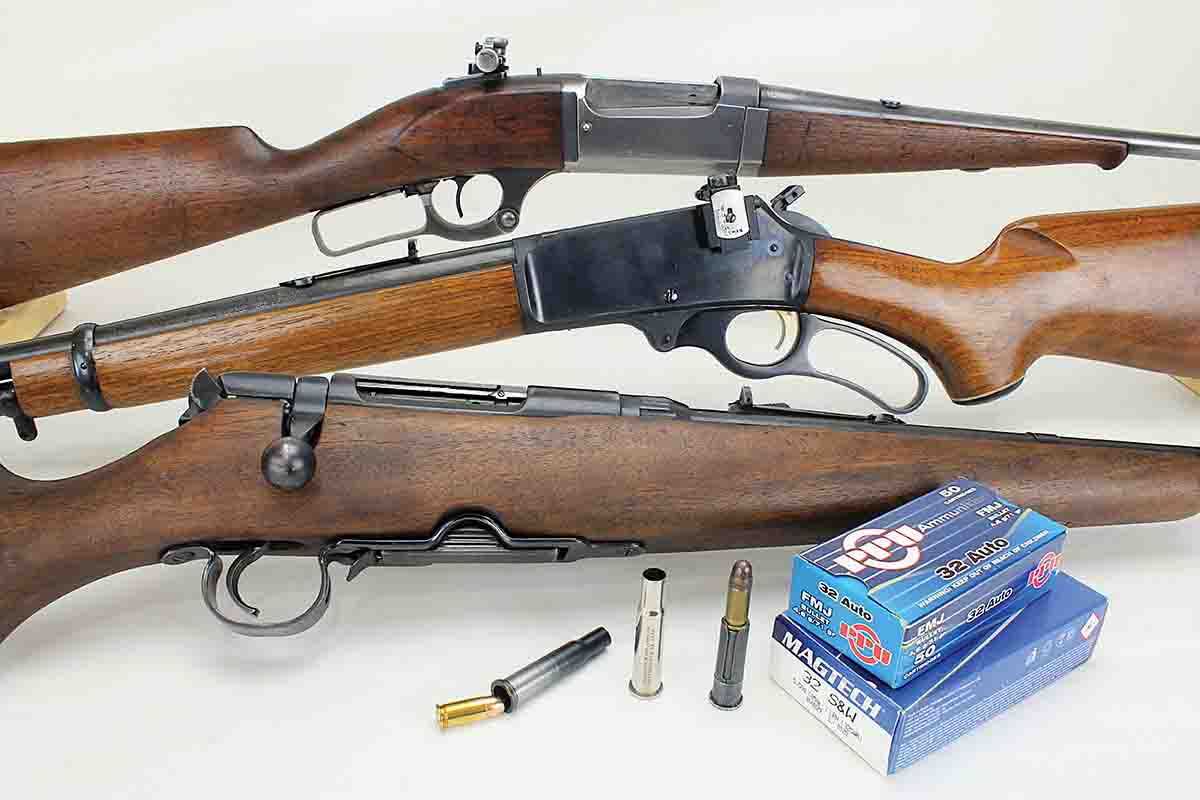
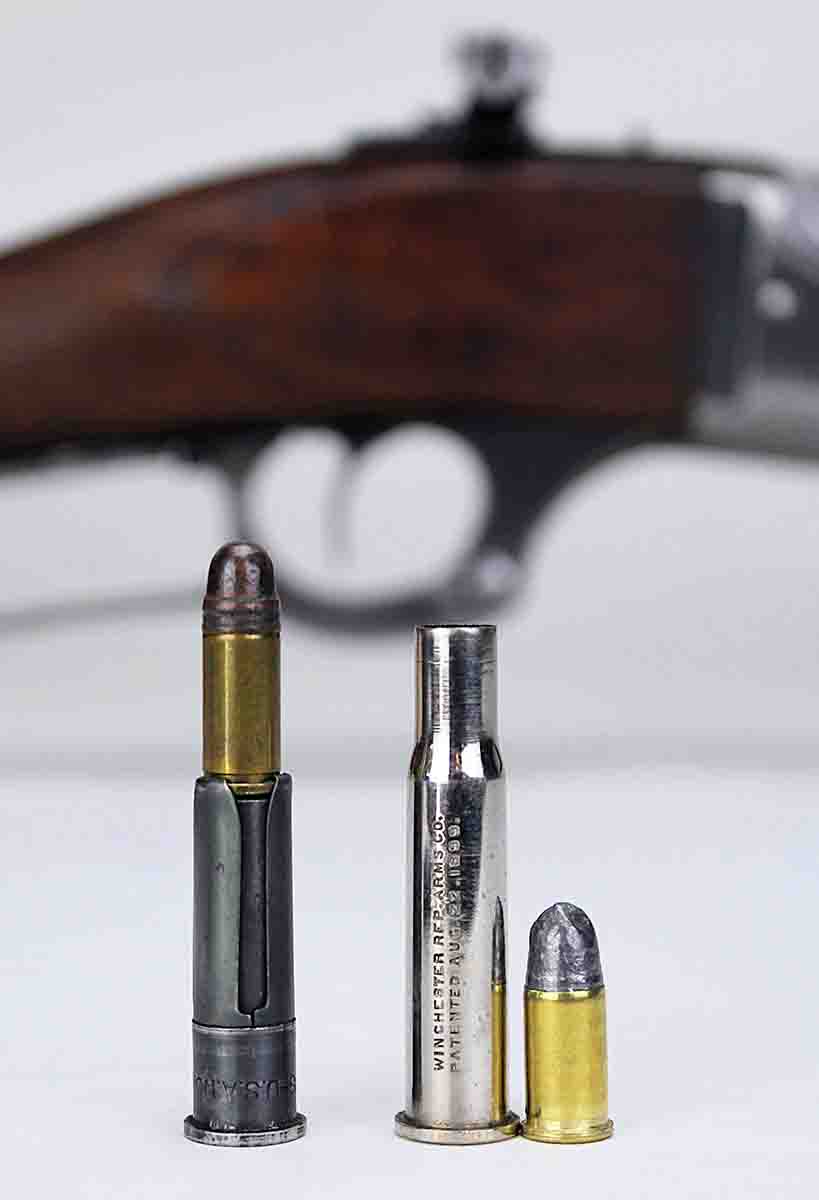
The auxiliary chamber has the same external dimensions of a specific cartridge case – say, a .223 Remington – and internal dimensions to accept a specific smaller cartridge – in this example, a .22 Long Rifle. The shooter then introduces the loaded auxiliary chamber into the rifle’s chamber and fires in the normal manner. To produce any modicum of usable accuracy, the auxiliary’s bullet must be of the same, or nearly the same, diameter as the parent rifle’s bore or groove diameter. In the example of the .223 Remington, the .22 Long Rifle’s .225-inch bullet diameter is a close enough match to the .223 Remington’s .219-inch bore and .224-inch barrel groove diameter.
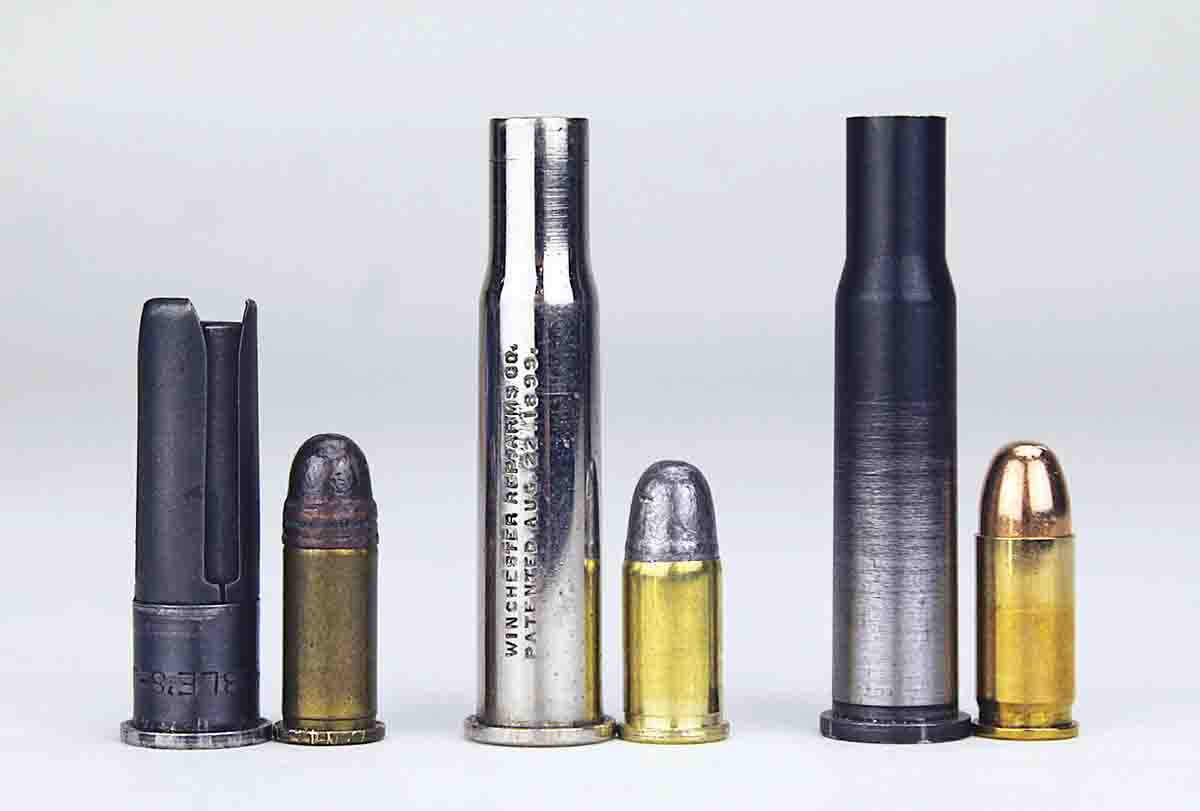
But do they really work well? That is, do they shoot with useable accuracy? To satisfy that curiosity, cartridge collector and shooting buddy Ken Riley and I came up with three different .30-30 auxiliary chambers between us for some testing and comparisons in three different rifles. One auxiliary chamber is from Winchester and accepts the .32 S&W cartridge; another was manufactured by Marble’s, taking the .32 Short Colt. The third is unmarked and chambers .32 ACP. None, oddly, are stamped with cartridge designations, either .30-30 or their pistol cartridges. For some unfathomable reason, this lack of cartridge ID is common among auxiliary chambers.
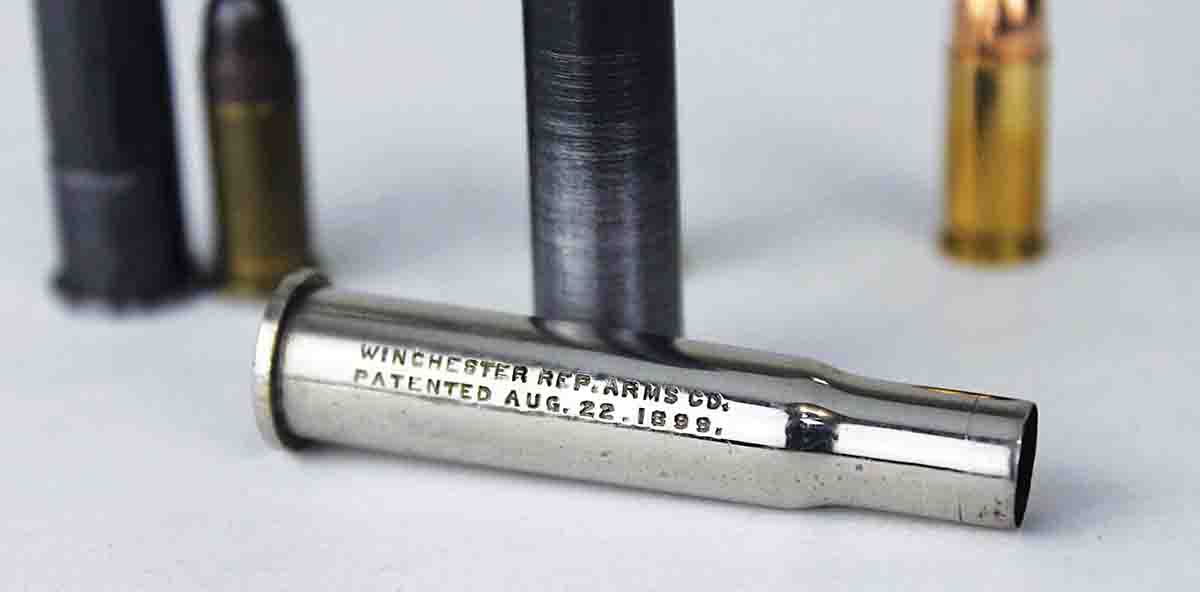
The unmarked auxiliary chamber and the Winchester both work in the manner of the majority of such devices: a loaded pistol cartridge slips in the back, where the rifle’s firing pin can strike its primer and send the bullet on its way. The auxiliary chambers’ outside dimensions are, of course, essentially identical to that of an empty .30-30 case.
The inner dimensions are such that the pistol cartridges are an easy fit in the auxiliary chambers, and both are machined to headspace on the cartridges’ rims – the .32 ACP is not rimless, headspacing on the case mouth, but is actually a semi-rimmed cartridge that headspaces on the rim. Upon firing, the pistol bullets travel some distance, about an inch or so, down the smooth “bore” of the auxiliary chambers before engaging the lands and grooves of the rifle barrel.
The Marble’s auxiliary chamber, however, is quite different and better described as a chamber adapter. Only about half as long as a .30-30 case, it’s a solid piece of tubular steel drilled through to contain an integral firing pin. Three spring steel prongs hold the .32 Short Colt cartridge firmly against the top of the steel tube; this configuration places the loaded pistol cartridge in the neck area portion of the rifle’s chamber and gives the assembly an outside dimension identical enough to a loaded .30-30 cartridge to safely fit and fire in the rifle’s chamber, which occurs when the rifle’s firing pin strikes the chamber adapter’s integral firing pin. Being a kind of extension to the rifle’s bolt, it starts the pistol bullet about as close to the rifling as does a standard .30-30 cartridge. It is marked “MARBLE’S-U.S.A.NO.151.”
.jpg)
For .30-30 testing, we utilized two leverguns, a Savage Model 99 and a Marlin 336, plus a bolt-action Savage Model 340B. None of the rifles include a scope, but with firing done at a realistic small game 15 yards, magnification wasn’t necessary. As a rifleman can imagine, shooting mild pistol cartridges in these full-size rifles is pleasant, unusual and completely lacking in recoil, which allowed the shooter to watch the bullet holes appear on the target with the shot and hear the bullets slapping the paper targets.
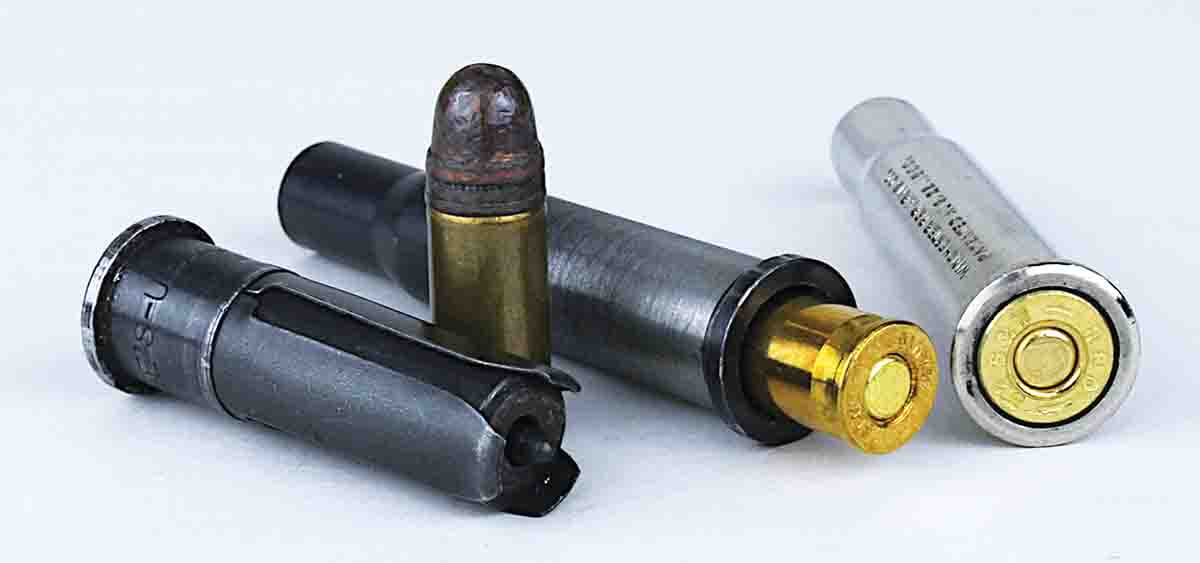
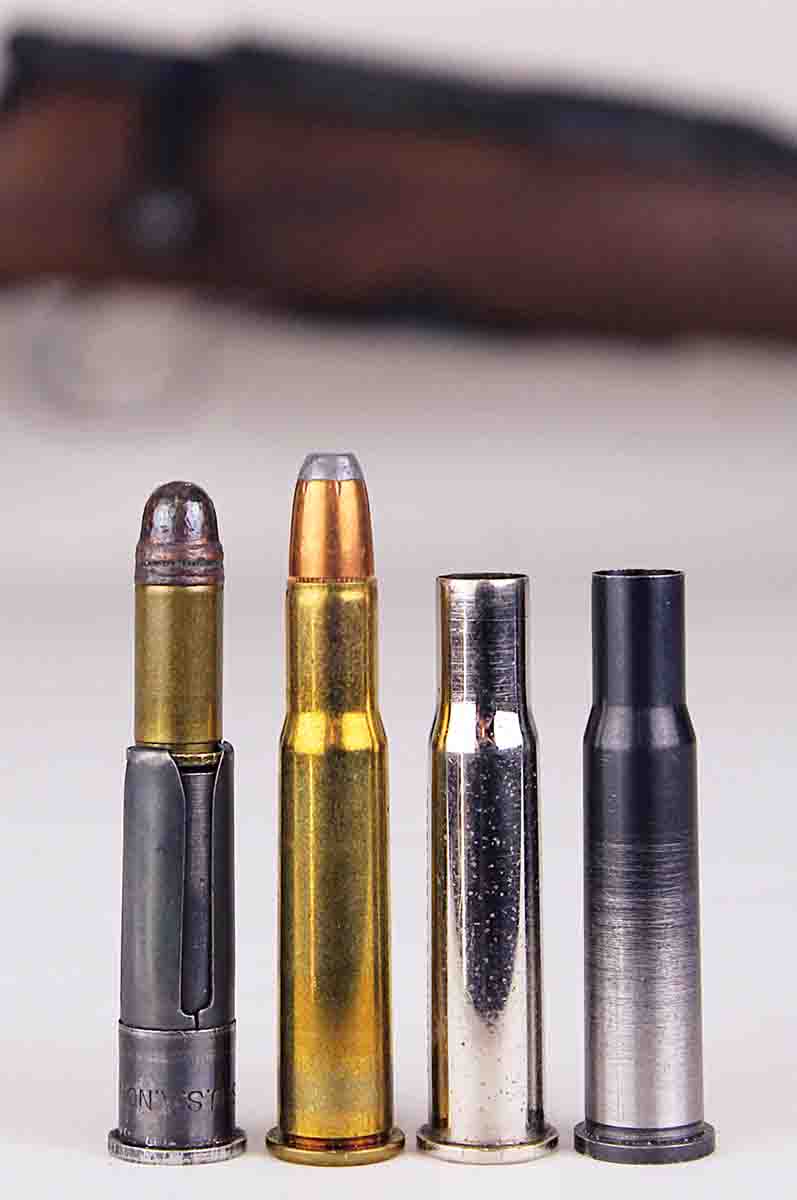
We sent lead bullets down the two Savage barrels, and I thought it appropriate to shoot jacketed .32 ACP ammunition in the Model 336, as the Marlin’s Micro-Groove rifling has a reputation for not doing well with soft, lead bullets. Bullet diameter of the .32 ACP is .311 inch, the .32 Short Colt is .314 and the .32 S&W, .315 inch; bore and groove diameter of the .30-30 is .300 and .308 inch, respectively. Yes, all the pistol bullets are clearly oversized for the .30-30, and no sensible person would shoot jacketed rifle bullets of these diameters with full-power rifle loads, as the attendant pressure increase could be catastrophic.
So, did these oversized pistol bullets produce signs of elevated pressure in the rifles? Yes and no. Or perhaps it’s more accurate to say, “Maybe, but…” First, someone might argue that the .32 S&W and .32 ACP cases were somewhat stuck in their respective auxiliary chambers after firing. Though unfired cartridges slip in easily, the only way to extract fired cases from the auxiliary chambers is to push them out with a short rod; doing so, the fired cases seemed to be gripping the auxiliary chamber walls. Case overexpansion from overpressure? I think not, as extraction required only a push on the short rod, not any rapping with a hammer.
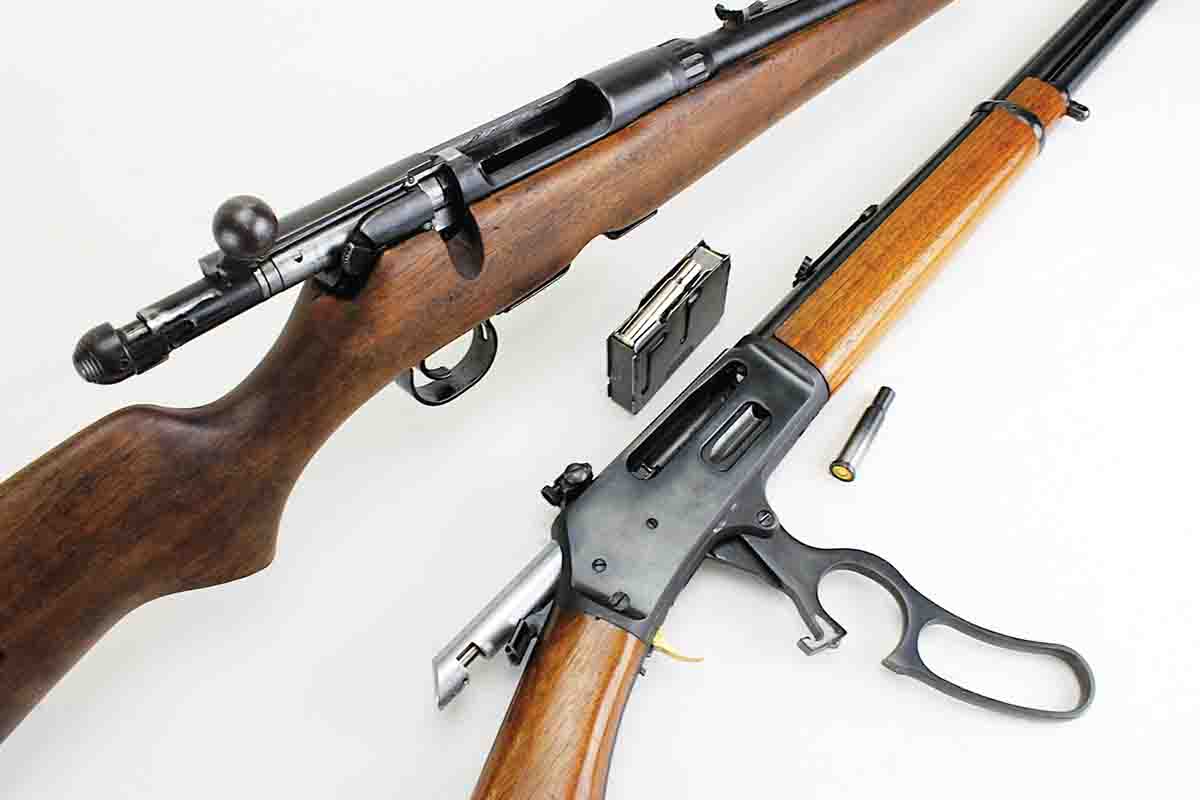
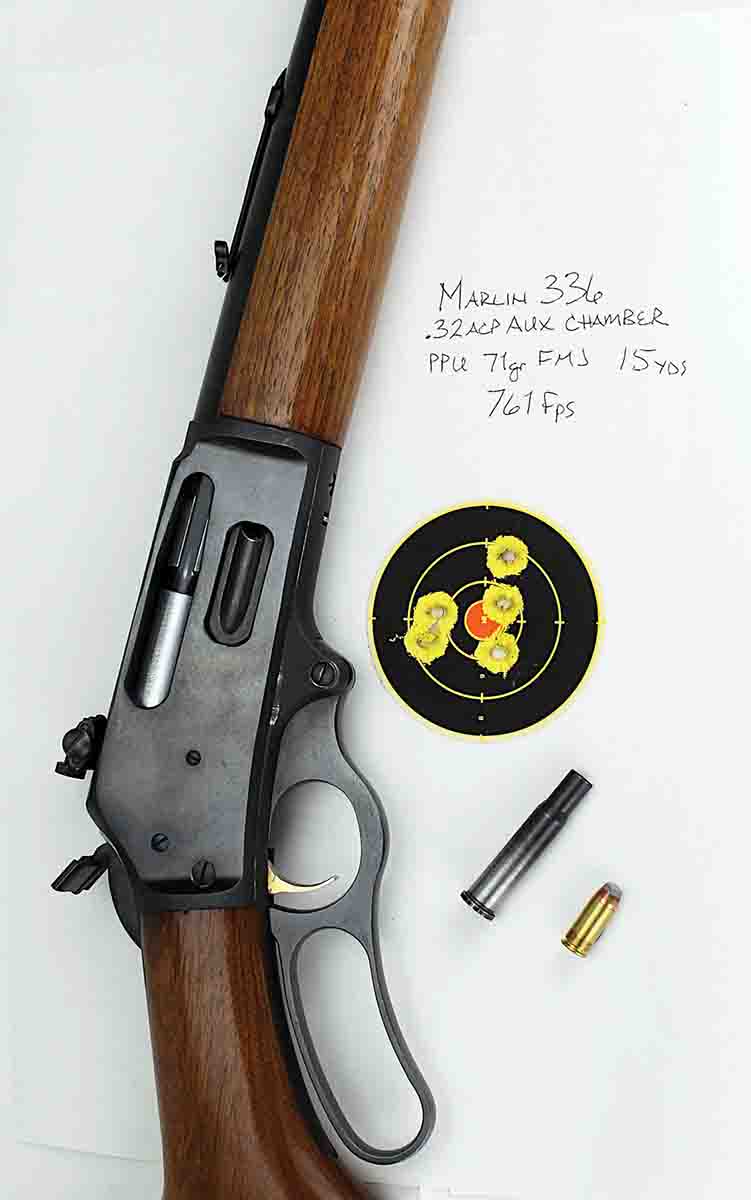
Let’s belabor this question of oversize bullets increasing pressures because it is an issue of safety. If we look at the velocity results here from the angle of just the math, the data sampling is just too small to be confident that there is enough difference in handgun versus rifle velocities to postulate there really is an increase in pressure. Also, there are so many other variables – bullet diameters, bore and groove diameters, rifling types, that cylinder/forcing cone gap, individual firearm/cartridge combinations and more – that a chronograph alone probably can’t resolve a definitive answer. Do the oversized pistol bullets raise chamber pressures in the rifles? The question is really moot in the face of reality, and the chronograph provides some confidence; given the strength of the rifles to accommodate far greater .30-30 pressures, even if pressures of the pistol cartridges are slightly elevated, it’s not enough to be of concern. Bottom line: these auxiliary chambers are safe to use in these rifles. Again, to reiterate especially for the neophyte, never fire oversize bullets at full pressure in any firearm.
For real-world use in the hunting fields, it’s sensible to make it unnecessary to adjust a rifle’s sights when firing a pistol cartridge in one of these auxiliary chambers, the hazard being blowing a shot at big game because sights were inadvertently left on the setting for the pistol cartridge. Here, then, is a prime opportunity to develop pistol cartridge loads to suit the zero setting of the rifle’s chosen big-game load. That said, a simpler approach is to choose a factory loaded pistol cartridge and at the shooting range, find at what distance the bullet strikes at point-of-aim. If someone wants to extend that distance without sight adjustments, then handloading may be in order.
Now to the matter of accuracy. We discovered that, using Winchester X .32 Short Colt factory loads with the Marble’s auxiliary chamber in Ken’s Savage Model 99, the rifle shot those pistol bullets to point-of-aim at 15 yards (a realistic grouse and squirrel distance) with the sights set for his 100-yard, big-game hunting load. The Marlin Model 336 with its Williams aperture rear sight performed similarly with .32 ACP factory ammunition and 150-grain .30-30 handloads. I did not shoot the Model 340B at 100 yards, as I don’t see barrel-mounted open sights well enough to confidently report an honest 100-yard grouping. Instead, I adjusted the 340B’s rear sight for 15 yards with Magtech .32 S&W factory ammunition. As for precision, all three rifles consistently grouped five rounds within 2.5 inches at 15 yards, with the Marlin and .32 ACP in the unmarked auxiliary chamber turning in best performance at 1.5 inches.
